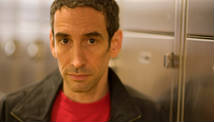NASA wants to blow up part of the International Space Station – and a Las Vegas firm is eager to help.
The US space agency has signed a $17.8-million contract with Bigelow Aerospace of Nevada to build an inflatable crew habitat for the ISS.
According to details released today at a press briefing , the Bigelow Expandable Activity Module, or BEAM, will launch in 2015. Astronauts on the ISS will test the module for safety and comfort.
BEAM will fly uninflated inside the trunk of a SpaceX Dragon capsule. Once docked and fully expanded, the module will be 4 metres long and 3 metres wide. For two years astronauts will monitor conditions inside, such as temperature and radiation levels.
Bigelow hopes the tests done in orbit will prove that inflatable capsules are safe and reliable for space tourists and commercial research, an idea almost as old as NASA itself. The space agency began investigating the concept of expandable spacecraft in 1958. Space stations like this would be easier to launch and assemble than those with metal components, so would be cheaper. But research ended after a budget crunch in 2000, and Bigelow licensed the technology from NASA.
Stronger skin
The company has made progress, developing shielding that resists punctures from space debris and micrometeorites. BEAM's skin, for instance, is made from layers of material like Kevlar to protect occupants from high-speed impacts. The craft's skin has been tested in the lab alongside shielding used right now on the rest of the ISS, says Bigelow director Mike Gold.
"Our envelope will not only equal but be superior to what is flying on the ISS today. We have a strong and absolute focus on safety," he says.
And we have to be sure that inflatable craft are safe, says William Schonberg, an engineer specialising in orbital debris protection at Missouri University of Science and Technology in Rolla. "The overall risk to the ISS is the sum of the risks of its individual components," he says.
It may seem counter-intuitive, but a flexible, inflatable design is just as likely to survive punishment from space debris as metal shielding, says Schonberg. "Certain composite cloth materials have been shown to be highly effective as shields against [high-speed space] impacts. So depending on what material is used, and in what combination it is used with other materials – such as thermal insulation blankets – the final design could be just as effective and perhaps better than the more traditional all-metal shields used elsewhere on the station."
Gold hopes BEAM will also demonstrate that fabric shielding can limit radiation risks. This is a major worry on missions to the moon or an asteroid say, where astronauts have to spend weeks or months outside Earth's protective magnetic field.
High-energy particles called cosmic rays constantly fly through the solar system, and when they strike metal shielding, they can emit secondary radiation in the form of X-rays. This doesn't happen with Kevlar-based fabric shields and so expandable habitats could be more desirable for travellers heading deeper into space, says Gold.
If you would like to reuse any content from New Scientist, either in print or online, please contact the syndication department first for permission. New Scientist does not own rights to photos, but there are a variety of licensing options available for use of articles and graphics we own the copyright to.
All comments should respect the New Scientist House Rules. If you think a particular comment breaks these rules then please use the "Report" link in that comment to report it to us.
If you are having a technical problem posting a comment, please contact technical support.











